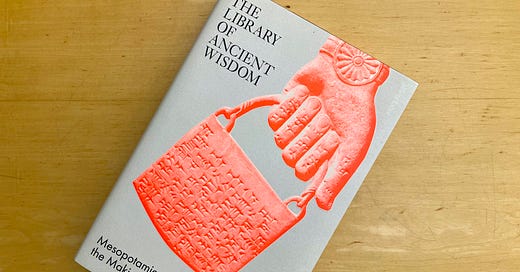Review: The Library of Ancient Wisdom by Selena Wisnom
A revelatory account of Mesopotamian culture in the Bronze Age
It is March 27, 669 BC, and night has fallen over Nineveh, the Assyrian capital. On the temple roof, Balasi, chief astrologer to king Esarhaddon, is scanning the sky. An adviser has told the king that Venus is visible, which in Assyrian cosmology is a good thing, portending good rain, rich harvests and peace. Balasi knows it can’t be true: Assyrian scholars have been recording the night sky and its predictable motions for a thousand years. But he’s compelled to check.
The king’s informant has mistaken Mercury for Venus. Balasi doesn’t hold back. “The man who wrote this to the king my lord is in complete ignorance,” he wrote to Esarhaddon. Another senior astrologer weighed in. The informant was “a vile man, an ignoramus, a cheat!” he wrote. “The king my lord should not hesitate but promote him at once!” Assyrian courtiers were clearly allowed more latitude that we might imagine when addressing their king. Sarcasm, like stargazing, has a long history.
Long histories of all kinds are at the heart of Selena Wisnom’s The Library of Ancient Wisdom, an absorbing exploration of the culture of Bronze Age Mesopotamia, via the abundant records they left behind. Those records were written on clay tablets using cuneiform, the world’s first writing script, formed through wedge-shaped marks made with a reed stylus.
The library of Wisnom’s title belonged to Ashurbanipal, Esarhaddon’s son, the last great king of Assyria. By the time Nineveh was sacked by the Babylonians in 612 BC, some 20 years after his death, cuneiform culture had lasted for nearly three millennia – half of recorded human history. But the library’s tablets, baked hard by the inferno, proved the most durable of media. They were discovered by the British archaeologist Austen Henry Layard in 1850; their decipherment seven years later shook the world. One Victorian scholar was so excited to find a Flood narrative pre-dating the Bible – complete with a ship on a mountaintop and a dove looking for dry land – that he ran around the British Museum taking off his clothes. Half a million tablets have now been found.
Wisnom’s approach is thematic: chapters by turn examine war, medicine, literature and so on. She is keen to stress the influence of Mesopotamian thought. We owe them the zodiac, the horoscope and the 60-minute hour. They developed irrigation and built aqueducts. They used algorithms to predict astronomical phenomena, and a form of calculus for planetary movement. Children in Nineveh were taught Pythagoras’ theorem a thousand years before Pythagoras.
Uruk, the first Mesopotamian city, emerged around 3500 BC, predating the earliest dynasties in Egypt by perhaps half a millennium; it was nearly two thousand years ahead of Mycenaean Greece and three thousand ahead of the Roman Republic. Mesopotamia has thus been dubbed “the cradle of civilisation”, but Wisnom finds the phrase – and the simple-mindedness it, by implication, imputes – misleading. The intellectual sophistication of Mesopotamian culture, she argues, offers us “a mirror to our own attempts at rationalisation and certainty”. The way they thought is entirely familiar; it’s what they thought that seems strange.
Take extispicy, the science of divining the will of the gods in a sheep’s entrails. A question was proposed, answerable only by “yes” or “no”. Thus in March 651 BC, Ashurbanipal, at war with his brother and fearful of other nations rising, asked, “Will the Elamites join the war?” There were 99 data-packed tablets for the diviner to consult. Evidence was rigorously tested before presentation. “The entrails were always checked by more than one diviner,” Wisnom notes, “and in some cases they were inspected by as many as eleven.” A second or a third extispicy would test the validity of the initial conclusion. It’s a model of process-driven decision-making. Of course, in the long run the Elamites did rise against Assyria when the divination said they wouldn’t. But divinations came with expiry dates – typically a month – so the decision held good.
Just as the Assyrians wrote on clay, so their gods wrote on the world. Stars were “the heavenly writing”; a sheep’s liver was “the tablet of the gods”. You have a date palm with two tops? People here are hostile to you. Your gate creaks? You’re at risk of attack. It was an exhausting body of knowledge to wield. Esarhaddon’s chief exorcist complained about his workload. He couldn’t meet his deadline for a ritual, he wrote: “The tablets are too numerous, God only knows when they will be written.”
Wisnom is stronger on reconstructing systems of thought than the routines and textures of ordinary Mesopotamian life. More of the latter would have been welcome. But the culture she reveals is always deeply, exhilaratingly human. Like us, the people of the 7th century BC looked to the past and to the world around them, alert for signs of comfort, consolation and hope.
This review first appeared in the Daily Telegraph in February 2025.




Okay so I need this book in my life. To the bookshop I go...
How can I get a copy of this book while I am in Iraq? 🥲